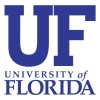
A Study of the Safety, Tolerability, Pharmacokinetics and Efficacy of Treatment With AP1189 in Patients...
Nephrotic Syndrome Due to Idiopathic Membranous NephropathySevere Proteinuria Due to Idiopathic Membranous NephropathyThis study is an exploratory, randomized, double-blind, multicenter, placebo-controlled study with repeated doses of AP1189. The study population will consist of patients with idiopathic membranous nephropathy (iMN) and severe proteinuria who are on ACE inhibitor or angiotensin II receptor blocker treatment.

AIM2ACT: A Mobile Health Tool to Help Adolescents Self-Manage Asthma
AsthmaThe aim is to test the efficacy of AIM2ACT and long-term maintenance of treatment effects in a fully-powered randomized controlled trial with 160 early adolescents with poorly controlled persistent asthma, ages 12-15 years, and a caregiver

A Study of Ponatinib With Chemotherapy in Children, Teenagers, and Adults With Philadelphia Chromosome-Positive...
Pediatric Philadelphia Chromosome-positive Acute Lymphoblastic Leukemia (Ph+ALL)Ph+ Mixed Phenotype Acute Leukemia (MPAL)1 moreThis study is about an anticancer drug called ponatinib which is a tyrosine kinase inhibitor given with chemotherapy to children, teenagers, and young adults up to 21 years of age with Philadelphia Chromosome-Positive Acute Lymphoblastic Leukemia who have relapsed or are resistant to other treatment. The main aims of this study are to confirm the highest dose of ponatinib tablets and minitablet capsules that can be given to participants with acceptable side effects, and to evaluate if participant's leukemia achieves remission. Participants will take ponatinib tablets with chemotherapy. For participants who cannot swallow tablets or who are receiving less than a 10 mg dose, a capsule with small ponatinib minitablets inside will be provided. Participants will take ponatinib for 10 weeks in combination with chemotherapy (reinduction and consolidation blocks) and will be followed up for at least 3 years.

Cirmtuzumab Consolidation for Treatment of Patients With Detectable CLL on Venetoclax
Chronic Lymphocytic LeukemiaSingle center, open-label, phase 2 study to determine the efficacy of cirmtuzumab consolidation in patients with measurable disease on venetoclax.

A Study to Evaluate the Efficacy and Safety of CAEL-101 in Patients With Mayo Stage IIIb AL Amyloidosis...
AL AmyloidosisAL (or light chain) amyloidosis begins in the bone marrow where abnormal proteins misfold and create free light chains that cannot be broken down. These free light chains bind together to form amyloid fibrils that build up in the extracellular space of organs, affecting the kidneys, heart, liver, spleen, nervous system and digestive tract. The primary purpose of this study is to determine whether CAEL-101, a monoclonal antibody that removes AL amyloid deposits from tissues and organs, improves overall survival and it is safe and well tolerated in patients with stage IIIb AL amyloidosis.

Elotuzumab in Immunoglobulin G4-Related Disease (IgG4-RD)
IgG4 Related DiseaseIgG4-RDThis is a two-part multi-center clinical trial in participants with active IgG4-RD. Part 1 (Cohort 1a and Cohort 1B) is an open-label, dose escalation phase to determine the safety of elotuzumab for investigation in IgG4-RD. Part 2 (Cohort 2) is a randomized, placebo-controlled, double-blinded (masked) trial phase to compare the effects of elotuzumab and prednisone to elotuzumab placebo and prednisone in participants with IgG4 RD. Approximately 75 participants with active IgG4-RD will be enrolled in the overall program, 12 in Part 1 and 63 in Part 2. Randomization in Part 2: 2 to 1, with approximately forty-two participants randomized to elotuzumab plus prednisone taper, and twenty-one participants randomized to placebo for elotuzumab plus prednisone taper. The total duration of participation for each participant in this trial will be 48 weeks (11 months).

(HARBOR) Study to Evaluate Efficacy and Safety of BLU-263 Versus Placebo in Patients With Indolent...
Indolent Systemic MastocytosisMonoclonal Mast Cell Activation SyndromeThis is a randomized, double-blind, placebo-controlled, Phase 2/3 study comparing the efficacy and safety of BLU-263 + best supportive care (BSC) with placebo + BSC in patients with indolent systemic mastocytosis (ISM) whose symptoms are not adequately controlled by BSC. Parts 1 and 2 will enroll patients with ISM. Patients enrolled in Part 1 or Part 2 will roll over onto Part 3 to receive treatment with BLU-263 in an open-label fashion following completion of the earlier Part. Part M will enroll patients with monoclonal mast cell activation syndrome (mMCAS). The study also includes PK groups that will enroll patients with ISM.

PD-1 Inhibitor Tislelizumab Maintenance Therapy in Newly Diagnosed DLBCL Patients After ASCT
LymphomaLarge B-Cell3 moreThis is a multicenter, randomized controlled, prospective clinical trial. The objective is to investigate the efficacy and safety of Tislelizumab maintenance therapy in newly diagnosed diffuse large B-cell lymphoma (DLBCL) patients after autologous hematopoietic stem cell transplantation (ASCT).

Open Label Randomized Multicenter to Assess Efficacy & Tolerability of Ofatumumab 20mg vs. First...
Multiple SclerosisThis study will compare ofatumumab vs. European approved platform first line self-administered disease modifying therapy (DMT) in newly diagnosed MS patients

CD19-CAR_Lenti T Cells in Pediatric Patients Affected by Relapsed/Refractory CD19+ ALL and DLBCL...
Acute Lymphoblastic LeukemiaDiffuse Large B Cell Lymphoma1 moreThis study aims at evaluating the feasibility and safety of the administration of autologous T cells that have been modified through the introduction of a chimeric antigen receptor targeting the B-cell surface antigen CD19, following administration of lymphodepleting chemotherapy regimen, in children and adults with relapsed/refractory B-cell acute lymphoblastic leukemia (B- ALL) or aggressive B-cell Non-Hodgkin lymphoma (B-NHL). The phase II extension is aimed at testing the efficacy of the treatment at the optimal dose defined in the phase I. In addition, the investigators hypothesize that it is feasible to successfully manufacture CAR T cells to meet the established release criteria at a maximum target dose of 3.0 x 10^6 cells/kilogram recipient total body weight in this patient population using the Miltenyi CliniMACS Prodigy® closed transduction system.
